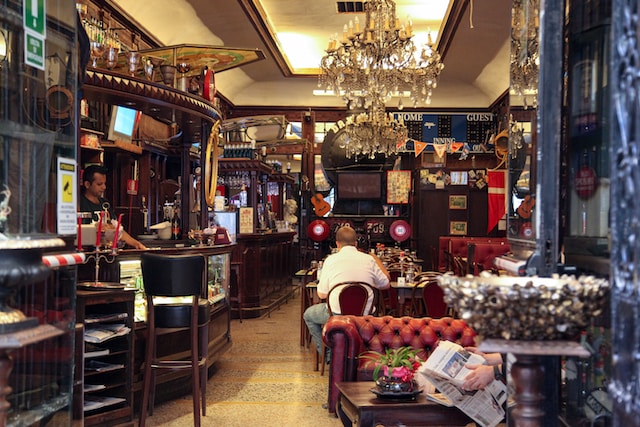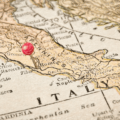Living in Rome as a Digital Nomad – Live in Italy
Welcome to Rome, the Eternal City that effortlessly blends ancient history with modern living – making it an idyllic destination for digital nomads. In this comprehensive guide, we uncover the ins and outs of living in Rome as a remote worker, from cost-effective co-working spaces like Cowo 360 and Coaster to navigating its vibrant culture.
Whether you’re new to the digital nomad scene or simply daydreaming about working amidst iconic Italian landmarks, join us as we explore what it takes to thrive while working remotely in Italy’s enchanting capital city.
Key Takeaways
- Rome is a vibrant and culturally rich city that can be an ideal destination for digital nomads. However, it’s important to weigh the pros and cons of living in the Eternal City before choosing it as your base.
- Despite its high cost of living, there are affordable accommodation options available such as co – living spaces, shared apartments outside the city center or weekly rentals. Food costs vary depending on where you choose to shop or dine out but eating at local trattorias or shopping at markets can help save money.
- There are plenty of transportation options like public buses and metro lines to get around Rome. The city offers several coworking spaces such as Coaster, Talent Garden, Impact Hub among others along with cafes/bars where one can work from comfortably. San Giovanni, Prati, Testaccio Monti & Trastevere are some popular neighborhoods for expats & nomads seeking a lively yet peaceful environment while staying close to central tourist attractions.
Life In Rome
Living in Rome offers a vibrant culture with beautiful architecture and history, but it comes at a cost as the city has one of the highest costs of living in Italy.
Rome Overview
Rome, the Eternal City, boasts an array of iconic landmarks, rich history and vibrant culture that draw visitors from around the world. As a digital nomad, living in Rome provides endless opportunities for inspiration and immersion into Italian life.
Despite its historical background, Rome has also evolved into a thriving metropolis catering to modern needs – essential for any digital nomad.
Pros And Cons Of Living In Rome
Living in Rome as a digital nomad comes with its distinct advantages and drawbacks. Here are some pros and cons to consider when deciding whether the Eternal City is the right destination for you:
Pros:
- Rich Culture and History: Rome offers endless opportunities to explore historical sites, museums, art galleries, and stunning architecture.
- Delicious Food: Delight in authentic Italian cuisine from traditional pasta dishes to pizza, gelato, and more.
- Vibrant Nightlife Scene: From lively bars, clubs, and outdoor restaurants to cosy wine bars, there’s always something happening when the sun goes down.
- Public Transportation: Rome has an extensive public transport system including buses, trams, metro lines, and taxis for easy navigation around the city.
- Warm Climate: Enjoy pleasant weather throughout most of the year with mild winters and warm summers.
Cons:
- Limited Co-Working Spaces: Finding suitable places to work with reliable Wi-Fi can be challenging compared to other popular digital nomad destinations.
- High Cost of Living: Expenses such as rent, groceries and eating out can be quite pricey in Rome’s city center.
- Congestion & Pollution: Traffic jams are common in the city resulting in high levels of air pollution which may impact your health or daily commute.
- Language Barrier: English is not widely spoken outside of tourist areas which might pose communication challenges during daily interactions.
- Bureaucracy & Red Tape: Be prepared to navigate through complicated bureaucratic procedures related to visas, permits or setting up a business in Italy as a foreigner.
Overall, it’s essential for digital nomads to weigh these pros and cons before making a decision about living in Rome as their base while working remotely.

Sant’Apollinare, RO, Italia
Cost Of Living In Rome
Rome offers an affordable cost of living for digital nomads compared to other major European cities. Here’s a breakdown of the living expenses you can expect while staying in Rome.
| Expense | Cost (Euros) |
|---|---|
| Rent (One-bedroom apartment in city centre) | 900 – 1,200 |
| Rent (One-bedroom apartment outside city centre) | 600 – 900 |
| Utilities (Monthly) | 100 – 150 |
| Internet (Monthly) | 25 – 40 |
| Public transportation (Monthly pass) | 35 |
| Meal at inexpensive restaurant | 12 – 20 |
| Cappuccino | 1.20 – 2.50 |
| Groceries (Monthly) | 200 – 300 |
| Entertainment and leisure activities | Variable |
Here are some of the costs of food staples in Rome:
- Bread: A loaf of bread costs around €1.50.
- Cheese: A block of cheese costs around €2.50.
- Eggs: A dozen eggs costs around €1.50.
- Fruit: A bunch of bananas costs around €1.00.
- Vegetables: A bag of carrots costs around €0.50.
- Meat: A pound of ground beef costs around €3.00.
- Fish: A pound of salmon costs around €4.00.
- Wine: A bottle of wine costs around €5.00.
- Beer: A pint of beer costs around €3.00.
These prices are for basic, everyday foods. You can expect to pay more for specialty foods or foods that are imported from other countries.
If you are on a tight budget, there are a few things you can do to save money on food in Rome. You can cook your own meals at home, buy groceries from local markets, and eat at affordable restaurants. You can also take advantage of free food and drink options, such as the free aperitivo that is often served with drinks at bars and restaurants.
The costs outlined above are approximate and can vary depending on your lifestyle and preferences. Consider these expenses when planning your stay and budget as a digital nomad in Rome.

Rome, Italia
Accommodation Costs In Rome
As a digital nomad, finding affordable accommodation in Rome can be a challenge. The average cost of rent for a one-bedroom apartment in the city centre is around $709.44 per month, which is quite expensive compared to other European cities.
One popular and budget-friendly option for digital nomads is co-living spaces like coliving.com where you can share living space with like-minded individuals while saving on costs.
Another option is looking on Wanted in Rome’s apartment rentals where they offer apartments perfect for expats and travelers staying longer than just a week.
Food Costs In Rome
For digital nomads, one of the most enticing aspects of living in Rome is its delicious local cuisine. From traditional pizza and pasta to gelato and wine, there are endless options for exploring the city’s food scene.
However, it’s important to note that food costs in Rome can vary depending on where you choose to dine out or shop for groceries. If you’re looking to stick to a budget, eating at local trattorias or shopping at markets such as Mercato Testaccio or Campo de’ Fiori can be more affordable than dining at high-end restaurants in touristy areas like Trastevere or near the Spanish Steps.
On average, an inexpensive meal in Rome will cost around €12-€20 per person while purchasing groceries for a week could cost anywhere from €50-€100 depending on your preferences and habits.
Transportation Costs In Rome
Getting around Rome as a digital nomad is easy and affordable. With plenty of public transport options available, including buses, trams, and the metro, you can travel throughout the city with ease.
A single ticket for any mode of transport costs just €1.50 ($1.77), and it’s valid for 100 minutes from when you first use it.
There are also plenty of taxi services available in Rome, although they can be quite pricey compared to public transport options. It’s best to download an app like Uber or MyTaxi to ensure that you get a fair price for your journey.
If you prefer cycling, there are several bike-sharing schemes available across the city too.
Best Neighborhoods In Rome – best places to live
If you’re a digital nomad considering a move to Rome, choosing the right neighborhood is key. Here are some of the best neighborhoods in Rome for digital nomads:
- Prati – Located just north of the Vatican City, Prati is a calm and quiet residential area with easy access to public transportation. It offers plenty of cafes, restaurants, and shops, making it ideal for remote workers who need to run errands or take breaks throughout the day.
- San Giovanni – Situated southeast of the city center, San Giovanni is a vibrant and bustling neighborhood with a mix of residential and commercial areas. It’s well-connected by public transport and has plenty of affordable accommodation options.
- Testaccio – Famed for its street food scene, Testaccio is an up-and-coming neighborhood that’s popular with young professionals and artists. It’s slightly cheaper than other central neighborhoods and has plenty of co-working spaces.
- Monti – Nestled between the Colosseum and Piazza Venezia, Monti is a charming area filled with cobblestone streets, vintage shops, and trendy bars. It’s considered one of Rome’s coolest neighborhoods but can be pricier than other options.
- Trastevere – Located across the Tiber River from the historic center, Trastevere retains much of its medieval charm despite being increasingly popular among tourists. It boasts plenty of restaurants, bars, and boutiques while still feeling like an authentic Roman neighborhood.
No matter which neighborhood you choose to live in as a digital nomad in Rome, you’ll be surrounded by incredible history, culture, and cuisine at every turn!
Working In Rome
“Digital nomads can find a variety of places to work in Rome, including co-working spaces like Cowo 360 and cafes such as Roscioli Caffè or Sant’Eustachio Il Caffè.”
Best Places To Work In Rome
Rome has several options for digital nomads looking for a place to work. Here are some of the best places to work in Rome:
- Coaster – This co-working space offers several packages, including a day pass, hot desk, dedicated desk, and private office. There is also a “coffice” option available for those who want to work in a coffee shop setting.
- Talent Garden – With two locations in Rome, Talent Garden offers flexible coworking spaces and private offices along with networking events.
- Impact Hub – Impact Hub offers a variety of options such as hot desks, dedicated desks, and private offices along with many workshops and events throughout the year.
- The Factory Roma – This coworking space has flexible memberships ranging from day passes to private offices and also offers printing services and event spaces.
- Club Office Roma – Located close to Termini station, Club Office Roma offers spacious coworking spaces with 24/7 access, meeting rooms & virtual address services.
- Beehive – This hostel & co-living space has comfortable working spaces available for non-guests as well that offer high-speed WiFi and quiet surroundings.
These are only a few of the many coworking spaces available in Rome! Make sure to check out each option’s website before deciding where to set up your workspace in the Eternal City for the duration of your stay as a digital nomad.
Best Cafes For Work In Rome
Looking for the best cafes to work in Rome as a digital nomad? Check out these top options:
- Ex Circus: Located near Piazza Navona, this work-friendly café is known for its free Wi-Fi and great coffee.
- Rino: This café/bar welcomes digital nomads with open arms and provides a relaxed atmosphere for working.
- Freni e Frizioni: A popular spot among locals and tourists alike, this café/bar offers plenty of seating and good food to keep you going throughout the day.
- Faro: Situated near the Vatican City, this café is perfect for those looking to escape the hustle and bustle of Rome’s city center while still having access to reliable Wi-Fi.
- Roscioli Caffè Pasticceria: This chic café has a lovely outdoor seating area, making it a great option for those looking to soak up some sun while getting some work done.
- Pergamino Café: With ample seating and free Wi-Fi, this cosy café is ideal for those who prefer a quieter environment when working.
- Come il Latte: This modern spot serves up delicious coffee and pastries, making it an excellent choice for those who also want to treat themselves while working.
- Sant’Eustachio Il Caffè: Known as one of Rome’s oldest cafés, this establishment boasts award-winning coffee and plenty of space to work.
- Antico Forno Roscioli: This cafe offers both indoor and outdoor seating, making it an excellent choice no matter what the weather is like outside.
- Barnum Café: With two locations in Rome that offer free Wi-Fi and plenty of seating options, this cafe chain is perfect for nomads who need flexibility in their workspace options.
No matter what your preferences are – be it quiet or bustling environments – these top cafes have got you covered when it comes to finding the perfect work-friendly spot in Rome.

Rome, Metropolitan City of Rome, Italy
Transportation in Rome
There are many ways to get around Rome. Here are some of the most popular options:
- Public transportation: Rome has a comprehensive public transportation system that includes buses, trams, the metro, and trains. Tickets can be purchased at any newsstand or tobacconist.
- Taxis: Taxis are readily available in Rome, but they can be expensive. It is a good idea to agree on a price before getting in the taxi.
- Bicycles: Rome is a very bike-friendly city. There are bike lanes throughout the city and bicycles can be rented from many shops.
- Walking: Rome is a very walkable city. Many of the major tourist attractions are within walking distance of each other.
If you are planning on doing a lot of sightseeing, I recommend purchasing a Roma Pass. The Roma Pass includes unlimited use of public transportation, free entry to two major museums, and a discount on other attractions.
Here are some additional tips for getting around Rome:
- Be sure to stamp your ticket when you board public transportation. Tickets are not valid if they are not stamped.
- The metro is the fastest way to get around Rome, but it can be crowded during peak times.
- Buses are a good option for getting to less popular destinations.
- Taxis can be expensive, but they are a good option if you are traveling with a group or if you are in a hurry.
- Biking is a great way to see the city and get some exercise.
- Walking is the best way to experience Rome and to get off the beaten path.
With a little planning, you can easily get around Rome using public transportation.
Digital Nomad Visa For Italy
If you’re a digital nomad and planning to work remotely in Italy, the Digital Nomad Visa for Italy might be your ticket. The visa allows highly skilled professionals who work remotely to live and work in Italy for up to a year.
This includes both freelancers and those employed by companies based outside of Italy.
Many digital nomads are drawn to Rome as a destination due to its rich history, beautiful architecture, and vibrant culture. With the new digital nomad visa program established in recent years, it’s easier than ever before for remote workers from around the world to enjoy all that Rome has to offer without worrying about lengthy stays or local bureaucracy.
Rome Digital Nomad Community
The Rome Digital Nomad community is growing rapidly, and there are plenty of opportunities to meet other like-minded individuals who work remotely. Co-working spaces, such as Impact Hub and the Beehive, offer regular networking events that allow digital nomads to connect with each other while also providing a space to work.
In addition, many expat groups in Rome cater to remote workers and provide an opportunity to meet new people. The American Expats in Rome group hosts monthly happy hours at various bars around the city, where digital nomads can socialize with their peers over drinks.
Overall, the Rome Digital Nomad Community is active and thriving, offering plenty of opportunities for new arrivals to network with other remote workers and find a sense of belonging within this vibrant city.
Exploring Rome
Discover the best things to do in Rome and experience the vibrant nightlife, get around the city with ease, and learn about the optimal time to visit Rome.
Things To Do In Rome
Rome is a city that is steeped in history, culture and charm. As a digital nomad exploring the city, there are endless things to do. Here are some of the best:
- Visit the Colosseum – No trip to Rome is complete without visiting this world-famous ancient arena.
- Wander around the Roman Forum – Take a stroll through one of the most significant historical sites in Rome.
- Explore Vatican City – With its beautiful architecture and art, Vatican City is a must-visit destination in Rome.
- See the Trevi Fountain – Make sure you toss a coin into this iconic fountain for good luck.
- Walk around Piazza Navona – This picturesque square boasts stunning Baroque architecture and hosts street performers and artists.
- Enjoy delicious gelato – Sample some of the best gelato in the world at places like Giolitti or Fatamorgana.
- Take a cooking class – Learn how to cook traditional Italian dishes from local chefs and bring home your newfound culinary skills.
- Shop at Mercato Centrale – This bustling indoor market offers fresh Italian produce and tasty street food for you to munch on while exploring the city.
As a digital nomad in Rome, make sure you take advantage of all that this incredible city has to offer!
Rome Nightlife
Rome is renowned for its vibrant nightlife, and there are plenty of options available to cater to different tastes. The city’s bars and clubs stay open until late, offering visitors a range of entertainment options.
There are many live music venues in Rome, with jazz and blues being particularly popular genres.
For those who prefer dancing, Rome has numerous nightclubs where you can let loose and enjoy the latest hits well into the early hours. Many nightclubs boast fantastic sound systems and light displays that add excitement to your evening out.
Overall, Rome offers excellent opportunities for digital nomads looking to socialize after work or explore the city’s vibrant nighttime scene during their time off work while enjoying Italy’s friendly vibes throughout their journey as they engage with fellow digital nomads from around the world.
Getting Around Rome
There are a variety of transportation options available in Rome, making it easy for digital nomads to get around the city. Here are some tips on how to navigate Rome:
- Public Transport: Rome’s public transport system includes buses, trams, and the metro. The easiest way to use public transport is by purchasing a Roma Pass or a single ticket that allows you to use all modes of public transport for one hour.
- Private Transport: Taxis and ride-hailing services are readily available in Rome. However, they can be more expensive than using public transport.
- Walking: Rome is a walkable city with many sights and attractions within walking distance of each other. It’s also a great way to explore the city’s charming neighborhoods.
- Cycling: While cycling in Rome can be challenging due to its narrow streets and heavy traffic, there are bike rental services available that allow digital nomads to explore the city at their own pace.
- Driving: Driving in Rome can be difficult for those unfamiliar with the city’s roads and traffic laws. However, if you plan to rent a car, make sure you have an international driver’s license and book parking in advance as it can be difficult to find parking spots.
Overall, public transport is the most convenient option for getting around Rome as it covers most areas of the city at affordable prices while also being environmentally friendly.
Best Time To Visit Rome
To avoid the crowds and high prices, digital nomads should consider visiting Rome between October and April. This is when you can expect a quieter experience while enjoying lower accommodation rates.
November and December are also great months to visit as Rome transforms into a winter wonderland with festive decorations adorning the streets.
Overall, choosing the right time to visit Rome is key to having an enjoyable experience as a digital nomad.
Practical Tips For Digital Nomads In Rome
Obtaining a visa for Italy, finding digital nomad accommodation, and tips for working remotely in Rome are all covered in this section—read on to make the most out of your stay as a digital nomad in this incredible city.
Obtaining A Visa For Italy
Italy has recently launched a digital nomad visa that is geared towards non-EU residents who carry out highly qualified work activities. If you’re interested in applying for this visa, here are the steps you need to follow:
- Make sure you meet the eligibility requirements for the digital nomad visa for Italy.
- Gather all necessary documents to support your application, such as proof of income, health insurance, and criminal background checks.
- Submit your application for the digital nomad visa to the Italian embassy or consulate in your home country.
- Wait for a decision on your application. This process typically takes several weeks.
- Once approved, book your travel arrangements and start enjoying la dolce vita in Italy.
It’s important to note that the Italian government is planning to launch a new visa to encourage foreigners to spend a year working remotely in the country. Keep an eye out for updates on this development and consider it as another option if it becomes available in the future.
Finding Digital Nomad Accommodation In Rome
Looking for a place to stay in Rome? Here are some tips on finding the perfect digital nomad accommodation:
- Consider co – living spaces like Outsite or Nomad Coliving that offer private rooms, communal areas and organize social activities for digital nomads.
- Check out Airbnb, where you can find apartments and rooms in central locations across the city at reasonable prices.
- Look for short – term rentals on websites like Spotahome or Nestpick that cater to expats and digital nomads.
- Join Facebook groups such as “Digital Nomads in Rome” or “Roommates in Rome” to connect with locals and other like-minded travelers who may have recommendations for affordable accommodations.
- Think about house – sitting through platforms like TrustedHousesitters or HouseSitMatch, which can provide unique opportunities to stay in local homes for free while caring for pets and plants.
Remember, it’s important to research the area you’re looking to stay in to ensure it has good connectivity, access to basic amenities such as grocery stores and markets, and is close enough to your preferred co-working spaces or cafes.
Tips For Working Remotely In Rome
Working remotely in Rome can be exciting and challenging. Here are some tips for digital nomads looking to work productively from this city:
- Find a good co – working space or cafe that suits your work requirements and has a reliable internet connection.
- Take breaks to explore the city and see its famous sights, such as the Colosseum, Roman Forum, and Vatican City.
- Use public transportation like buses and metro trains to save time while commuting around the city.
- Set realistic goals for your workday and make sure to stick to them with discipline.
- Stay hydrated by drinking plenty of water during hot weather in Rome.
- Eat healthily by trying local delicacies that balance taste with nutrition, such as fresh fruits, vegetables, and seafood dishes.
- Be respectful of local customs and try to learn some Italian phrases to communicate more effectively with locals.
- Volunteer for local organizations or charities to give back to the community you are temporarily living in.
Overall, working remotely in Rome can provide an excellent balance between productivity and cultural immersion for digital nomads looking for adventure while staying focused on their careers abroad.
Eating In Rome
Eating in Rome is one of the best experiences for digital nomads, and one of the reasons to visit this eternal city. The Italian capital offers an unparalleled culinary experience ranging from classic pasta dishes like Cacio e Pepe, Amatriciana, and Carbonara to classic thin crust pizza Margherita or Marinara.
Gelato is also a must-try dessert while in Rome.
One tip for saving money when dining out would be to seek less known Trattorias (a small restaurant selling simple Italian dishes) outside the city center where prices are more affordable than those located near tourist hotspots.
FAQs:
1. What are the best areas in Rome for digital nomads to work from?
Trastevere, Monti, and Testaccio are among the most popular neighbourhoods for digital nomads to work from as they offer excellent Wi-Fi connectivity and a range of cafes with comfortable seating areas.
2. How do I find affordable accommodation in Rome as a digital nomad?
Websites like Airbnb or HomeAway offer great options for short-term rentals that cater specifically to travellers seeking budget accommodations in Rome. Additionally, staying slightly outside of the city center can save you money while still allowing you to enjoy all that Rome has to offer.
3. Are there good co-working spaces in Rome that I can use?
Yes! Co-working spaces like Impact Hub Roma and Talent Garden Roma provide an optimal environment for remote workers looking for a professional space outside of their home or hotel room. You can rent out these spaces by the day, week or even month.
4. How easy is it to get around Rome as a remote worker?
Getting around Rome is fairly easy thanks to its robust public transportation system which includes buses, trams and metro lines. Taxis are also abundant but tend to be more expensive than public transport options so it’s important to plan ahead if you’re on a budget. Bicycle rentals are also available throughout the city which makes getting around using human power an eco-friendly option worth considering!


























